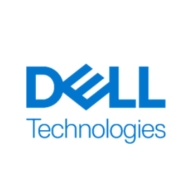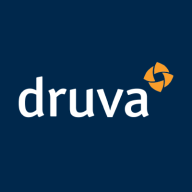

Dell CloudBoost and Druva Phoenix compete in the cloud data protection market. Druva Phoenix seems to have the upper hand due to its superior scalability and simplicity.
Features: Dell CloudBoost offers robust integration capabilities, flexibility in managing data workflows, and seamless connection with various IT infrastructures. Druva Phoenix provides advanced scalability, simplicity in its feature set, and automatic data protection across diverse environments.
Ease of Deployment and Customer Service: Dell CloudBoost facilitates straightforward deployment with comprehensive support for system integration. Druva Phoenix offers a cloud-native experience, simplifying deployment and enhancing customer support.
Pricing and ROI: Dell CloudBoost has a pricing structure reflecting its extensive features, leading to potentially higher initial costs but valuable long-term ROI in complex environments. Druva Phoenix presents an affordable model with rapid ROI due to minimized overhead from its cloud-based approach.
| Product | Market Share (%) |
|---|---|
| Druva Phoenix | 0.8% |
| Dell CloudBoost | 0.2% |
| Other | 99.0% |

| Company Size | Count |
|---|---|
| Small Business | 4 |
| Midsize Enterprise | 3 |
| Large Enterprise | 2 |
With Dell CloudBoost, products of Dell Data Protection Suite, Including Dell NetWorker, Dell Avamar and Dell PowerProtect Data Manager, are optimized for enterprise applications running in public cloud environments. CloudBoost is available with Data Protection Suite.
Druva Phoenix is a comprehensive cloud-based data protection and management solution that enables organizations to securely backup, recover, and manage their data across endpoints, physical servers, virtual machines, and cloud applications. With its scalable and flexible architecture, Druva Phoenix simplifies data protection and eliminates the need for traditional backup infrastructure.
By leveraging the power of the cloud, Druva Phoenix offers organizations a cost-effective and efficient way to protect their critical data. It provides automated backup and recovery capabilities, ensuring that data is always protected and easily recoverable in the event of a disaster or data loss. With its global deduplication and compression technology, Druva Phoenix minimizes storage requirements and reduces costs.
Druva Phoenix also offers advanced features such as point-in-time recovery, allowing organizations to restore data to a specific point in time, and granular file-level recovery, enabling users to recover individual files or folders. Its intuitive web-based console provides a centralized view of all protected data, making it easy to manage and monitor backups across the entire organization.
In addition to data protection, Druva Phoenix offers comprehensive data management capabilities. It enables organizations to gain insights into their data through advanced analytics and reporting, helping them make informed decisions and optimize their storage resources. Druva Phoenix also supports legal and compliance requirements by providing eDiscovery capabilities and ensuring data is retained and disposed of according to regulatory guidelines.
With its cloud-native architecture, Druva Phoenix offers organizations the flexibility to protect and manage their data across a wide range of environments, including on-premises, remote offices, and cloud applications such as Microsoft 365 and Google Workspace. It seamlessly integrates with popular cloud platforms like AWS and Azure, allowing organizations to leverage their existing cloud investments.
We monitor all Cloud Backup reviews to prevent fraudulent reviews and keep review quality high. We do not post reviews by company employees or direct competitors. We validate each review for authenticity via cross-reference with LinkedIn, and personal follow-up with the reviewer when necessary.